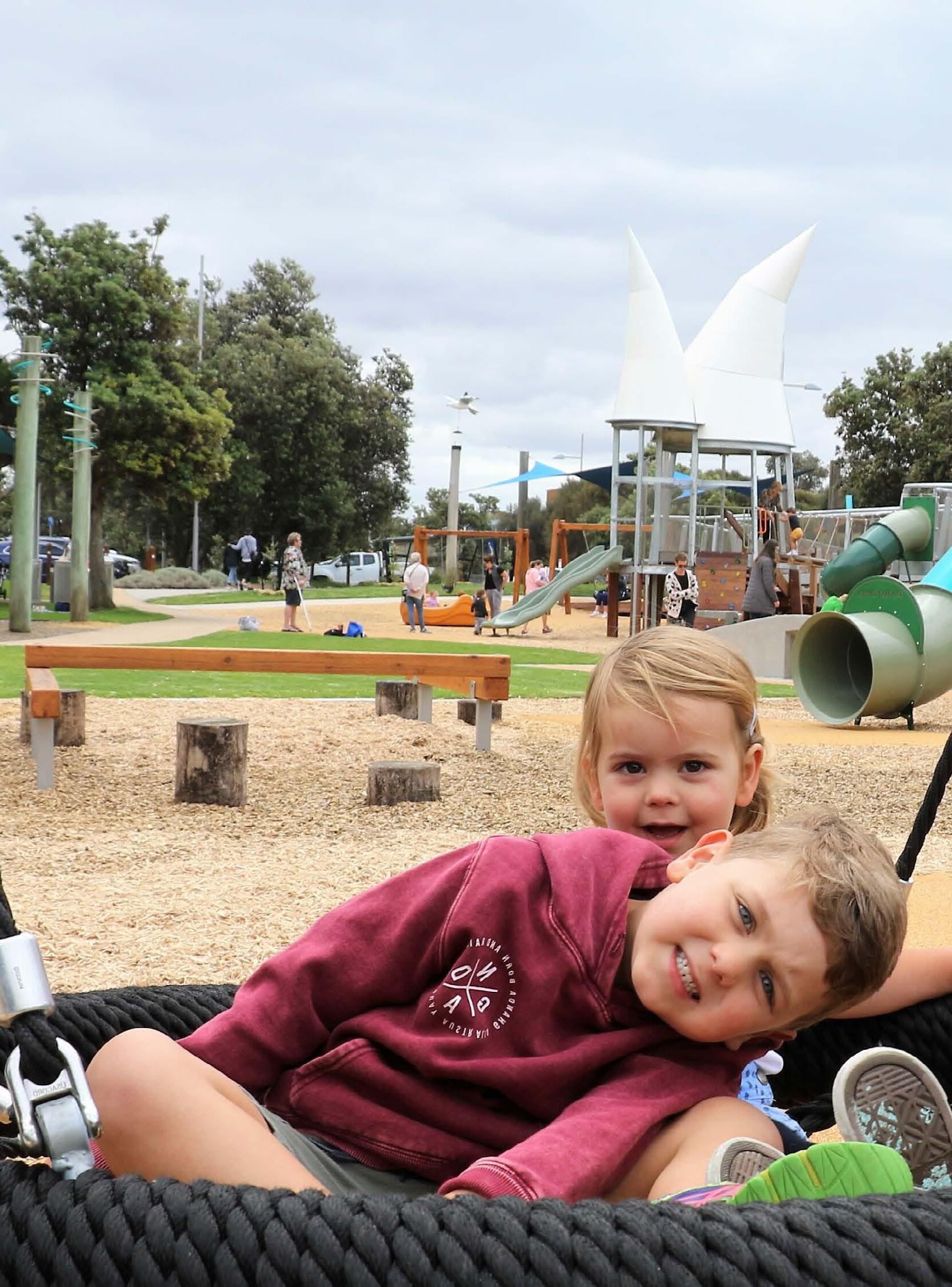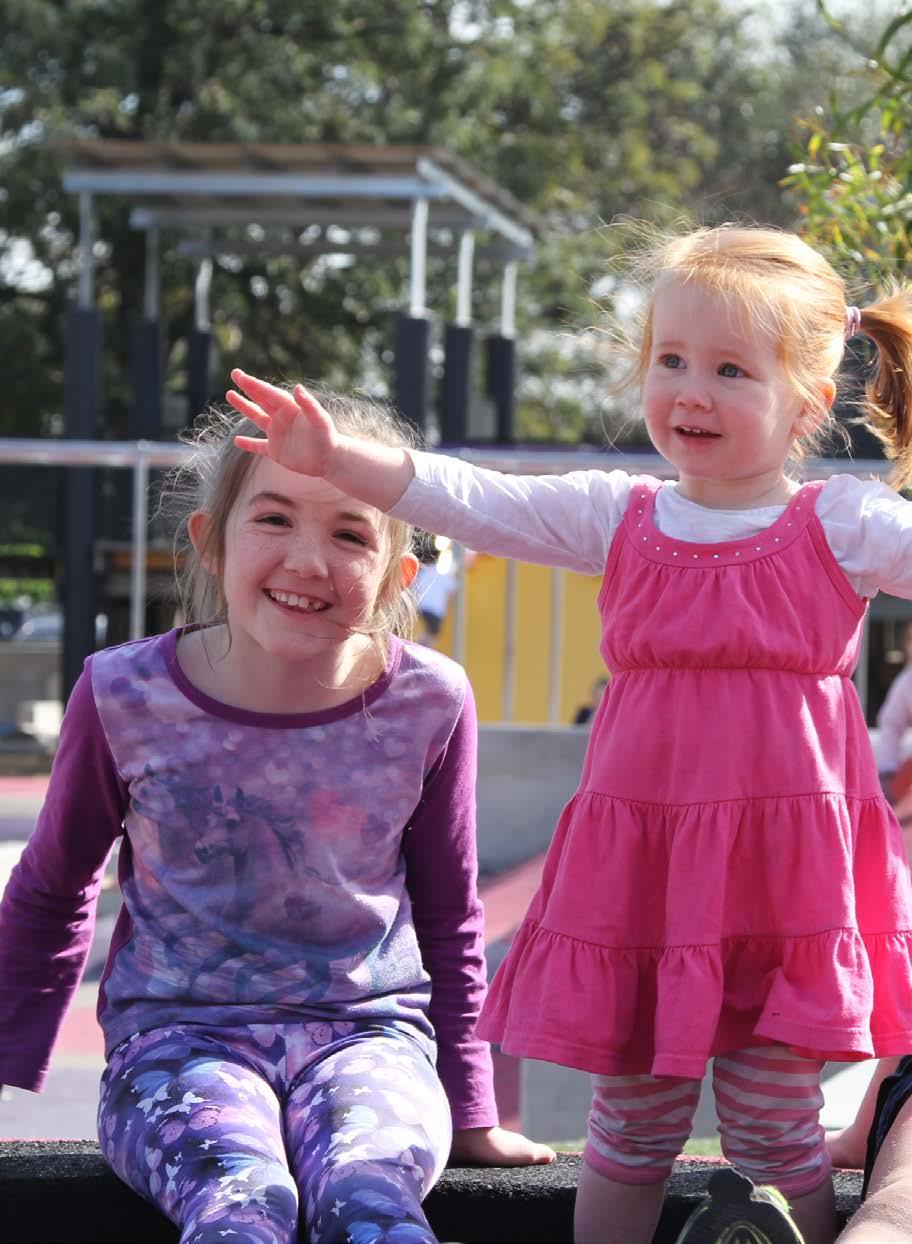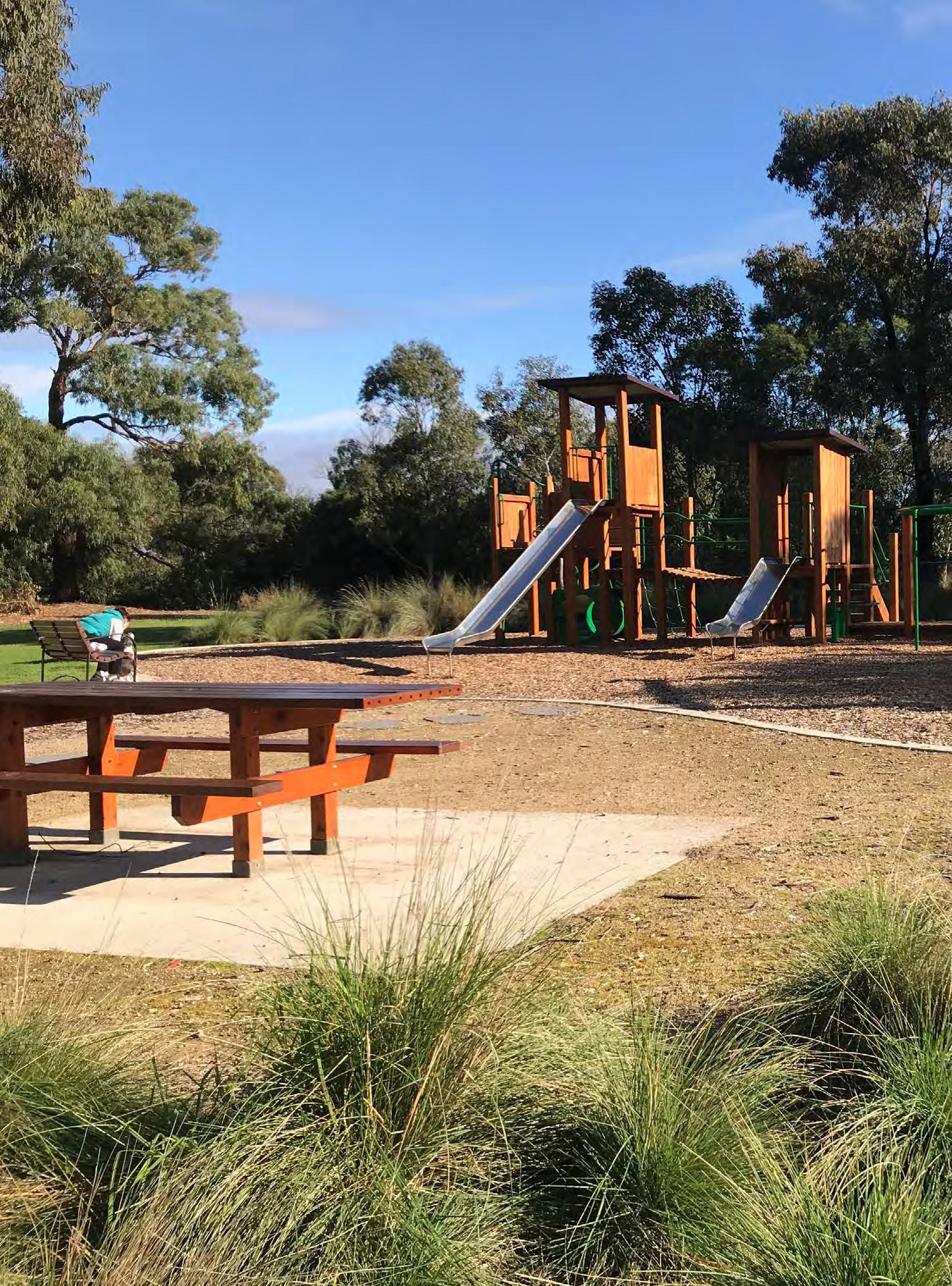
4 minute read
Who is the strategy for?
Community snapshot
Frankston City is located in the outer southern suburbs of Melbourne, about 40 kilometres south of the Melbourne CBD and it also borders to the west on Port Phillip Bay. The municipality is made up of 9 key neighbourhoods (Seaford, Carrum Downs, Sandhurst, Frankston North, Skye, Frankston, Langwarrin, Frankston South and Langwarrin South) and these are used for planning purposes in this strategy. Adjacent local government authorities include: Kingston; Greater Dandenong; Casey; and Mornington Peninsula Shire councils.
Advertisement
The municipal context is predominantly suburban and peri‐urban, with a larger commercial zone in Frankston central and industrial zones in Frankston, Seaford and Carrum Downs. The natural environment is coastal (bay foreshore) to the west with pockets of open space, bushland reserve and waterways throughout. A north‐south rail and freeway corridor dissects the city.
Current playspace provision in the Frankston City
The following is a list to date of the current Frankston City’s playspaces by neighbourhood:
124‐129. These 6 playspaces were not assessed as part of council’s network, but are currently shown as public playspaces that are, privately managed.
Who is our community?
Between the 2016 Census Data and the Australian Bureau of Statistcs ‘Estimated Resident Population we can build a picture of our
*It is generally considered that 1 playspace for every 1000 people is suitable distribution in metropolitan Melbourne.
How old are we?
A snapshot of the age of our community now in 2020 and what it will look like in 2040:
Ageing Population:
The population of Frankston City is getting older. In 2016 Frankston City’s population had a slightly higher % of 0‐17 year olds and a considerably lower % for 18‐24 year olds, than the Greater Melbourne average. Future projections indicate an 11% increase in residents aged 12‐24 years and a 2.4% increase in residents aged 0‐11 years by 2041. Of increasing importance is the projection that indicates a 40% increase in residents aged over 60 years by 2041.

How is our population changing?
Increased Development:
The development of new dwellings is seen as being the largest driver in population growth. The followin map outlines projected development growth in Frankston City in the next 25 years.
Which suburbs are most advantaged /disadvantaged?
The SEIFA (Socio‐Economic Indexes for Area) Map below indicates in 2016 the least disadvantaged suburbs to the most disadvantaged suburbs in Frankston City. The higher the score less disadvantaged, the lower the score more disadvantaged. SEIFA is assessed on the following criteria: education, occupation and economic resources.
801-850 851-900 901-950 951-1000 1001-1050 1051-1100 1101-1500
*It is important to note that in 2016 Frankston City was amongst the 10 median councils in Australia as defined by an overall municipal SEIFA index score of 1000.
.id, the population experts in September 2018.

Community Vision 2040
The Community Vision 2040 was developed by the Frankston City community in 2020‐21 to articulate long‐term vision and aspirations for the future of our City. The Community Vision 2040 provides an aspirational description of what our community wants for the future of our municipality, in terms of its look, feel and liveability.
The Community Vision 2040 forms part of Council’s strategic planning and reporting framework, to ensure that the community’s vision for the future of Frankston City is considered in all of Council’s planning and decision‐making, including this Play Strategy.
Our Community Vision:
“Frankston City 2040 is the place on the bay to learn, live, work and play in a vibrant, safe and culturally inclusive community. Our City is clean, green and environmentally responsible.”
The Community Vision 2040 identifies 6 themes and outlines key priorities for our Community. It also outlines Council’s role in the implementation of the vision and how it can make it happen. A summary of Council’s role in delivering open space and play improvements identified in the Community Vision 2040 is outlined below:
1. Healthy families and communities
“…Council will work as a direct service provider and partner in the provision of … open spaces to enhance community wellbeing, now and into the future.”
“Our community will be encouraged to be healthy and active through access to open green space, play spaces, shared paths and recreation facilities … Over the next 20 years, Council will continue to maintain and improve our open spaces and infrastructure to meet the changing needs of the community so that everyone is able to enjoy the important health and wellbeing benefits they provide.”
2. Vibrant and inclusive communities
“Vibrant and inclusive communities are socially connected and welcoming places where people feel accepted, engaged and able to participate in community life”
“Council is committed to principles of access, inclusion and cultural safety to ensure that everyone has the same opportunities to participate in community life”
“Council … works to provide and maintain accessible and inclusive community infrastructure that takes the needs of all into account, including residents with a disability, older people and families with young children as well as culturally and socially diverse community members.”
3. Natural environment and climate action
“Council will maintain, protect and enhance our open green spaces, coastal areas and waterways to ensure that the community can continue to enjoy our City’s unique and highly valued natural environment.”
“Council will adopt a range of environmental policies, strategies and community education programs with the aim of protecting and sustaining our natural and built environment, avoiding and reducing greenhouse gas emissions, sustainably managing our natural resources and increasing our resilience to climate change.”
4. Connected places and spaces
“Council provides a range of public spaces across the municipality that are well designed, safe and clean. Council will ensure that the community can continue to enjoy these spaces through enhancements and ongoing maintenance, and regulatory control of the environment to prevent and manage unsafe behaviours. Council will also work in partnership to provide urban design solutions and place‐making initiatives that enhance the accessibility and vitality of our public spaces, improving the overall liveability of the municipality.”
Council will continue to take a collaborative approach to improving the connectivity of our natural environment and enhancing biodiversity for the benefit of our wildlife, flora and future generations.”
5. Industry, employment and education
“Continue to promote Frankston City as a tourism destination and lifestyle capital.”







